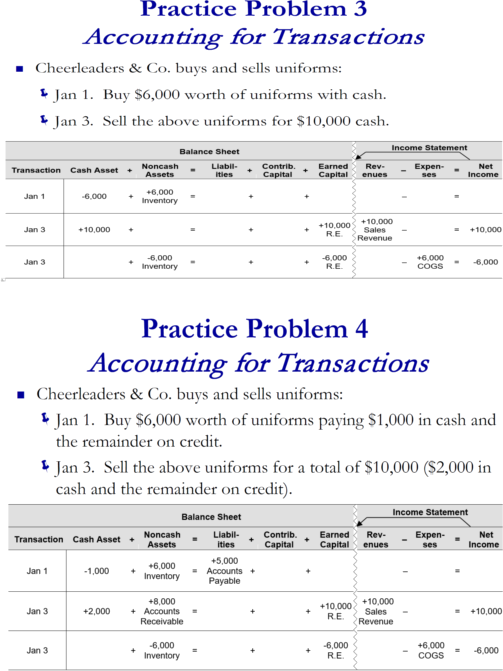ACC 502 – MS-FIN – FINANCIAL ACCOUNTING Fall 2023
Hello, dear friend, you can consult us at any time if you have any questions, add WeChat: daixieit
ACC 502 – MS-FIN – FINANCIAL ACCOUNTING
Fall 2023
MINI CASE 1 – Due August 21, at 10am
Submission (one per student) to do electronically via Canvas
QUESTION I: Southwest Airlines Co.
Use EDGAR or the company’s website to download the latest 10-K of Southwest Airlines Co. (fiscal year ending December 31, 2019).
Answer the following questions:
1. What is Southwest’s Balance Sheet Equation on December 31, 2019?
2. What is Southwest’s Net Income and Basic EPS (Earnings Per Share) for the fiscal year ending December 31, 2019?
3. Did Southwest retain most of its Net Income from the fiscal year 2019, or did the company declare some of it as dividends?
4. What is Southwest’s Net Operating Cash Flow for the fiscal year 2019?
5. Did Southwest’s Net Income for the year 2019 equal its Net Operating Cash Flow for that fiscal year? Explain why.
6. How much cash and cash equivalents did Southwest have on hand on December 31, 2019? On December 31, 2018?
7. Out of Southwest’s main activities (operating, investing, and financing), which activity(ies) provided a net inflow of cash and which activity(ies) provided a net outflow of cash during the fiscal year 2019?
8. What is Southwest’s book value (of equity) and market value (of equity) on December 31, 2019? Did Southwest’s book value equal its market value on December 31, 2019? What is Southwest’s market-to-book ratio? What does this market-to-book ratio indicate?
[Hint: The book value can be found on the company’s financial statements. For the market value, you will need the company’s i) number of common shares outstanding on December 31, 2019, and ii) stock price on December 31, 2019 (look up on the Internet, use the “closing” price as of December 31, 2019 adjusted for splits or adjusted for both splits and dividends)]
QUESTION II: Transactions
Use the financial statement effects template on the next page to record the transactions 1) through 8) listed below (see following examples from Session 1 (cont’d) SOLUTIONS slides 24 & 25 for examples of format):

1) Raised $100 in cash by selling its stock to the public.
2) Purchased $60 worth of inventory, paying $20 in cash and the balance on account.
3) Purchased land for $55 for which it issued a long term bond.
4) Returned $10 defective inventory purchased on account to the supplier.
5) Paid its supplier $20.
6) Sold inventory for $70 on credit; the cost of inventory sold was $25.
7) Collected $50 from a customer.
8) ABC’s accountant was paid a salary of $15 in cash for services rendered in January.
|
|
|
Income Statement
|
||||||||||||
|
Transaction |
Cash Asset |
+ |
Noncash Assets |
= |
Liabil- ities |
+ |
Contrib. Capital |
+ |
Earned Capital |
Rev-enues |
– |
Expen- ses |
= |
Net Income |
|
|
|
+ |
|
= |
|
+ |
|
+ |
|
|
– |
|
= |
|
|
|
|
+ |
|
= |
|
+ |
|
+ |
|
|
– |
|
= |
|
|
|
|
+ |
|
= |
|
+ |
|
+ |
|
|
– |
|
= |
|
|
|
|
+ |
|
= |
|
+ |
|
+ |
|
|
– |
|
= |
|
|
|
|
+ |
|
= |
|
+ |
|
+ |
|
|
– |
|
= |
|
|
|
|
+ |
|
= |
|
+ |
|
+ |
|
|
– |
|
= |
|
|
|
|
+ |
|
= |
|
+ |
|
+ |
|
|
– |
|
= |
|
|
|
|
+ |
|
= |
|
+ |
|
+ |
|
|
– |
|
= |
|
|
|
|
+ |
|
= |
|
+ |
|
+ |
|
|
– |
|
= |
|
|
|
|
+ |
|
= |
|
+ |
|
+ |
|
|
– |
|
= |
|
|
|
|
+ |
|
= |
|
+ |
|
+ |
|
|
– |
|
= |
|
|
|
|
+ |
|
= |
|
+ |
|
+ |
|
|
– |
|
= |
|
2023-08-21